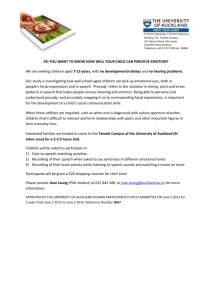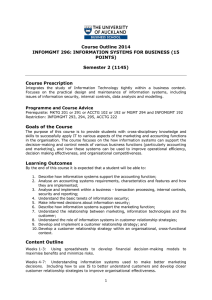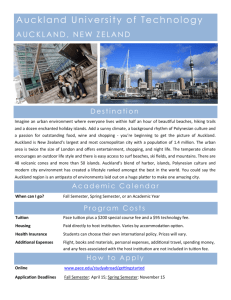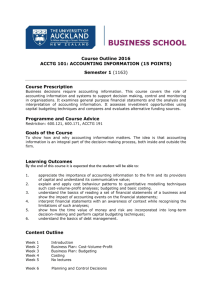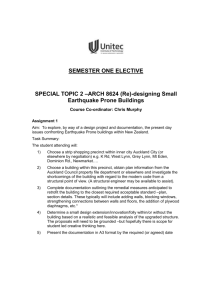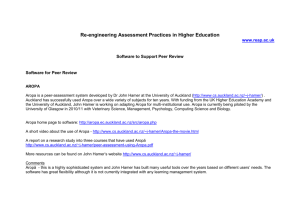ACCOUNTING INFORMATION SYSTEMS
advertisement
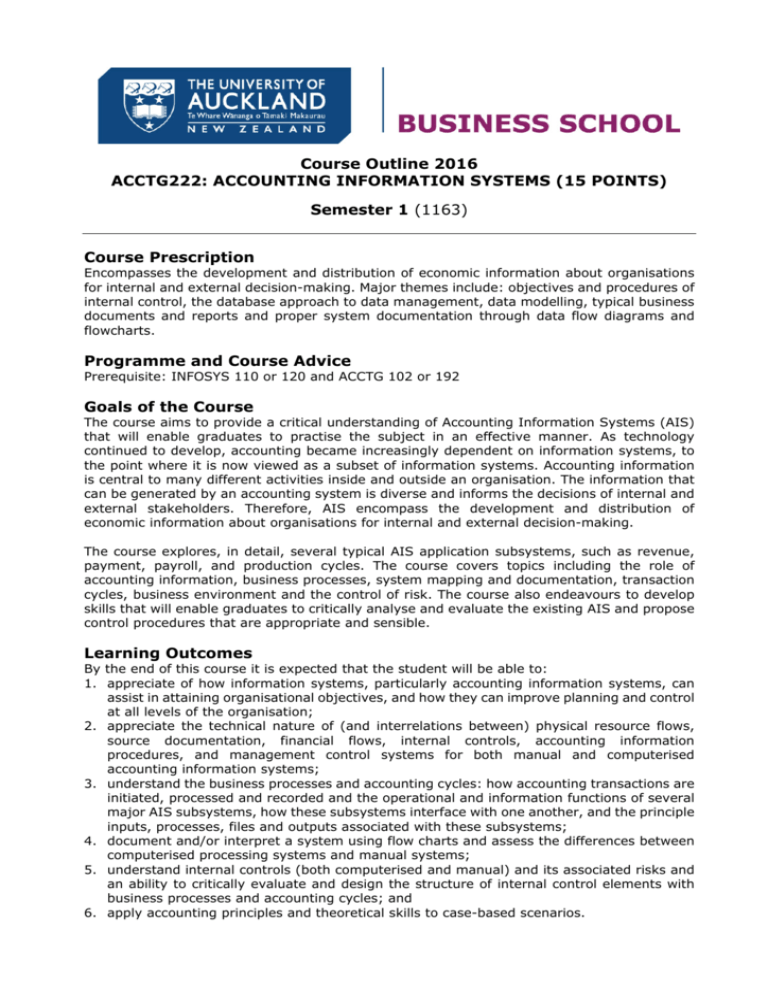
Course Outline 2016 ACCTG222: ACCOUNTING INFORMATION SYSTEMS (15 POINTS) Semester 1 (1163) Course Prescription Encompasses the development and distribution of economic information about organisations for internal and external decision-making. Major themes include: objectives and procedures of internal control, the database approach to data management, data modelling, typical business documents and reports and proper system documentation through data flow diagrams and flowcharts. Programme and Course Advice Prerequisite: INFOSYS 110 or 120 and ACCTG 102 or 192 Goals of the Course The course aims to provide a critical understanding of Accounting Information Systems (AIS) that will enable graduates to practise the subject in an effective manner. As technology continued to develop, accounting became increasingly dependent on information systems, to the point where it is now viewed as a subset of information systems. Accounting information is central to many different activities inside and outside an organisation. The information that can be generated by an accounting system is diverse and informs the decisions of internal and external stakeholders. Therefore, AIS encompass the development and distribution of economic information about organisations for internal and external decision-making. The course explores, in detail, several typical AIS application subsystems, such as revenue, payment, payroll, and production cycles. The course covers topics including the role of accounting information, business processes, system mapping and documentation, transaction cycles, business environment and the control of risk. The course also endeavours to develop skills that will enable graduates to critically analyse and evaluate the existing AIS and propose control procedures that are appropriate and sensible. Learning Outcomes By the end of this course it is expected that the student will be able to: 1. appreciate of how information systems, particularly accounting information systems, can assist in attaining organisational objectives, and how they can improve planning and control at all levels of the organisation; 2. appreciate the technical nature of (and interrelations between) physical resource flows, source documentation, financial flows, internal controls, accounting information procedures, and management control systems for both manual and computerised accounting information systems; 3. understand the business processes and accounting cycles: how accounting transactions are initiated, processed and recorded and the operational and information functions of several major AIS subsystems, how these subsystems interface with one another, and the principle inputs, processes, files and outputs associated with these subsystems; 4. document and/or interpret a system using flow charts and assess the differences between computerised processing systems and manual systems; 5. understand internal controls (both computerised and manual) and its associated risks and an ability to critically evaluate and design the structure of internal control elements with business processes and accounting cycles; and 6. apply accounting principles and theoretical skills to case-based scenarios. Content Outline First Half of Course Week 01: Introduction to Accounting Information Systems [Ch1] Business Transaction Cycle [Ch2:p39] Revenue Cycle [Ch7] and Expenditure Cycle [Ch8] Production Cycle [Ch10] Weeks 02-06: System Documentations [Ch03] and Data and Attributes [Ch02:p70-78] Second Half of Course Weeks 07-08: Fraud Prevention and Detection [Ch12] Information System Controls: Cybercrime [Ch13] and Security [Ch14] Confidentiality and Privacy of Data [Ch15]; System Availability [Ch16] Weeks 09-13: Internal Controls [Ch05] and Threats and Controls [Ch17] incl Payroll Subcycle and Human Resource Management Cycle [Ch09] Using Technology to Monitor and Identify Suspicious Transactions Learning and Teaching Lectures: two 2-hour lectures per week during the semester. Course Website: lecture recordings and any other online e-learning materials will be available online 24/7 on the ACCTG.222 course website https://acctg222.auckland.ac.nz (password protected and accessible only by enrolled students). Help Hours: several hours of assistance offered by the lecturer and the supporting tutors. Teaching Staff Please send all inquiries to acctg222@auckland.ac.nz for speedier response! Course Coordinator / Lecturer: Dr Angela Liew Office: 563, Level 5, Owen Glenn Building Tel: 373 7599 (extn 85800) Email: acctg222@auckland.ac.nz or a.liew@auckland.ac.nz Course Director: Professor Paul Rouse Office: 5119, Level 5, Owen Glenn Building Tel: 373 7599 (extn 87192) Email: acctg222@auckland.ac.nz or p.rouse@auckland.ac.nz Learning Resources • • ACCTG 222 Course Website [recordings], https://acctg222.auckland.ac.nz Best Choice Website [quizzes], http://www.bestchoice.net.nz [desktop version] or m.bestchoice.net.nz [for mobile devices such as iPhones, iPad etc] • Coursebook 2016 [mandatory]: please only use the Current Semester’s coursebook. [Do NOT purchase/use previous semester’s copy. Changes have been made!] • Text Book [optional]: Romney, Steinbart, Mula, McNamara and Tonkin (2013). Accounting Information Systems, Australia 1st Edition, Prentice Hall. [Note: There should be second hand copies of this edition available for sale. Do NOT use other editions as they are very different to this edition.] A new copy of the textbook can be obtained from UBS for $125. An electronic copy of the textbook can be purchased online for $85 from Pearson http://www.pearsoned.co.nz/9781442546790 FAQ about Pearson’s e-text, e.g. make highlights, print pages, can be found at http://www.pearsoned.co.nz/why-pearson/technology-learning/etexts/vitalsource-faqs/ • • Past exams can be retrieved from the Library, http://www.library.auckland.ac.nz Announcements and additional course materials will be distributed via Cecil. Assessment Online Quizzes Tests Final Exam 10% 25% 65% 100% [5% Mini Test + 20% Mid Semester Test] Further details on the assessments will be provided in the course book and at first lecture. The broad relationship between these assessments and the course learning outcomes is as follows: Learning Outcomes 1 2 3 4 5 6 Online Tests [first half] Tests √ √ √ √ √ √ √ √ Online Tests [second half] √ √ √ √ √ √ Final Exam √ √ √ √ √ √ All assessments are used to obtain an overall grade. To pass this course, you must: • Pass the course, i.e. obtain at least 50/100 in the overall mark in this course (overall mark = Online Quizzes + Mid Semester Tests + Final Exam), AND • Pass the Final Examination, i.e. obtain at least 50/100 in the final exam. ‘Plussage’ does not apply to this course. Note: Students who disregard Online Quizzes have a high tendency in failing this course.

